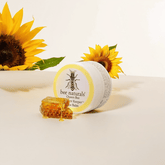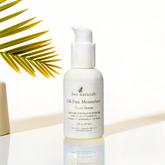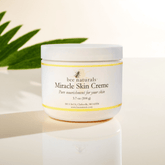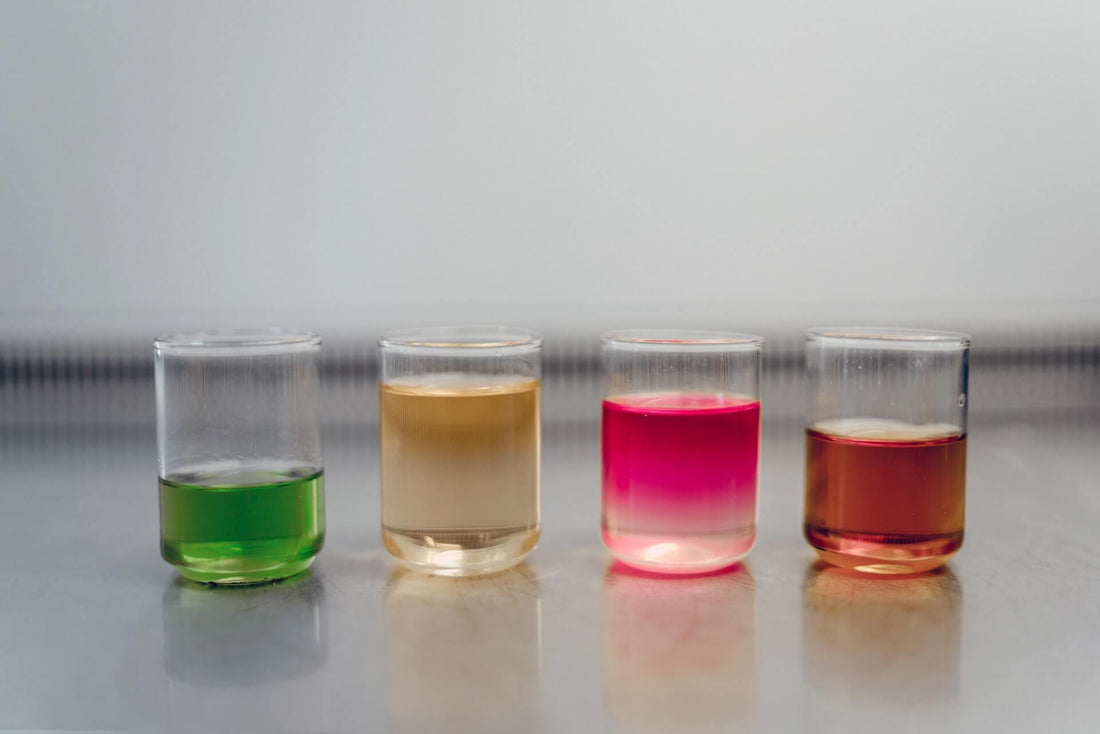10 Toxic Ingredients In Skincare and Cosmetics
These days there are millions of skin care products to choose from, whether it’s budget options at your local retailer or quality options at your favorite beauty supply. With so many products to choose from, it can be difficult to know what’s beneficial, what’s healthy, and what’s toxic.
While many people debate the long-term effects of skin-care cosmetics, the most obvious toxic ingredients have been banned in some countries and heavily restricted in the United States. Because your skin is such a sensitive organ and absorbs things so easily, it’s important to know what’s in your cosmetic items, especially if you have allergies. But with so many ingredients, how are you supposed to keep track of what’s harmful?
To make it easier for you, we’ve put together this list of the 10 toxic ingredients in skincare and cosmetics to keep an eye out for.
1, 4 Dioxane
A human carcinogen that’s found in groundwater sites throughout the United States, this ingredient can also show up as Sodium Laureate Sulfate, Sodium Laurel Sulfate, and PEG. It can also be hidden under ingredients like polyethylene glycol, polyoxyethylene, and oxynol.
1, 4 Dioxane is found in a staggering 22% of all petroleum-based cosmetics, including lotions, soaps, shampoos, and cleansers. It is also included in any “sudsy” products or products that create suds. The EWG (Environmental Working Group) has reported that nearly half of all tested products contain this ingredient.
This carcinogenic product can cause cancer and birth defects and is banned in Canada.
Artificial Colors and Coal Tar Dye
Artificial colors are used extensively throughout the cosmetics industry, especially in hair dyes. Artificial colors can be listed under a number of ingredients such as p-phenylenediamine, CI+number, FD&C+number, D&C+number.
It’s important to avoid artificial colors and dyes because they are carcinogenic, which is linked to cancer. Artificial dyes can also be contaminated with heavy metal toxins that irritate the skin, cause rashes, and affect the brain. These ingredients are also heavily toxic to local wildlife and are a water pollutant.
Coal tar is banned in Europe, and classified as a toxin.
Benzophene
This chemical ingredient is found in everything from sunscreen to nail polish and is used in lip treatments, foundations, fragrances, and moisturizers. Often used as a UV blocker, Benzophene can also be called sulisobenzone, oxybenzone, or sulisobenzone sodium.
It’s important to avoid this ingredient because of its cancer-causing properties, endocrine disruption, reproductive toxicity, developmental toxicity, organ system toxicity, skin irritation, and more. The harsh chemical properties make it attractive for companies that want to use it in cheap sunscreens, and it is restricted in both Europe and America.

BHA & BHT
Known as Butylated Hydroxytoluene and Butylated Hydroxyanisole, this ingredient is commonly found in color cosmetics, fragrances, and lip treatments. Moisturizers and cosmetics use it as a preservative.
BHA & BHT is banned in Europe and has been found to cause organ system toxicity, endocrine disruption, developmental toxicity, skin irritation, and cancer. It’s also harmful to fish and wildlife and is a water pollutant.
DEA Related Ingredients
These ingredients are known by a number of names including Triethanolamine, Ethanolamine Compounds, and DEA and TEA sulfates. Anything listed in the ingredients list with DEA- or TEA- is one of these related ingredients, and can be listed under phosphates, oleamides, stearmides, lineoleamides, and myristamides.
DEA-related ingredients can be found in a wide variety of cosmetic items including shaving creams, moisturizers, fragrances, and color cosmetics. It’s often included in products for its creamy or sudsy properties.
DEA-related ingredients are carcinogens that can cause cancer, and create bioaccumulation, organ system toxicity, plus skin and eye irritation. These ingredients are banned in Europe.
Formaldehyde
While many of us have negative associations with the active use of Formaldehyde as an ingredient, it’s hidden in cosmetics under many other names. Formaldehyde might show up your cosmetics or soaps as a number of things including DMDM hydantoin, Quaternium-15, imidazolidinyl urea, polyoxymethylene urea, 2-bromo-2-nitropropane-1, 3-diol and glyoxal.
This carcinogen can cause cancer, skin irritation, and more, and is often found in soaps, body washes, nail polish, nail hardeners, color cosmetics, and nail treatments. It’s banned in Japan and Sweden, and heavily restricted in Europe and Canada.
Hydroquinone
Hydroquinone is found in many common cleansers and moisturizers, and can also be an ingredient in skin lighteners. It can also be called Hydroquinone or tocopheryl acetate.
This product can cause cancer, respiratory tract irritation, and organ system toxicity, and is banned in Europe and restricted in Canada and the U.S.
Parabens
Parabens can show up as a number of different ingredients including Ethylparaben, butylparaben, methylparaben, isobutyl paraben, propylparaben, isopropyl paraben, and ingredients ending in –paraben.
Parabens are found in a number of products such as cleansers, moisturizers, body washes, and body scrubs, and can often be found in shampoos. Parabens act as a sort of hormone disruptor and can cause problems in both men and women. It can cause endocrine disruption, reproductive issues, cancer, and developmental toxicity. Parabens interfere with hormone production and can also cause infertility.
While not widely regulated, Parabens are banned in Denmark and other countries.
Parfume (AKA Fragrance)

Parfume (not perfume) is a complex chemical mixture used as a fragrance in many cosmetic products. Made of over 3000 different chemicals, parfume can be found in a number of personal care products, even ones marked as unscented. Parfume is used in colognes, perfumes, deodorants, soaps, shampoos, lotions, sunscreens, and more. Anything requiring a scent or the masking of a scent could contain Parfume or Fragrance.
It’s important to avoid this ingredient as it can cause cancer, trigger allergies, worsen asthma, and function as a neurotoxin. Fragrance is harmful to fish and wildlife and is also a pollutant in water.
Since Parfumes and Fragrance recipes are “trade secrets” in the industry, manufacturers aren’t required to disclose the chemicals in the ingredients list. Europe restricts several fragrance ingredients and has stricter policies on their use compared to the U.S. Many products that contain Parfumes have required warning labels, especially if the product contains allergens.
Petroleum Byproducts & Mineral Oil
Petroleum byproducts can show up as many different ingredients including petroleum jelly, liquid paraffin, Vaseline, and petrolatum. It’s often found in lotions, lip treatments, moisturizers, baby products, and hair products.
It’s important to avoid petroleum byproducts since these ingredients often cannot be metabolized by the body. Petroleum byproducts and mineral oil will often stay in your body and are a human carcinogen, which is linked to cancer.
These ingredients are heavily regulated in Europe, and are not allowed to be used in many products.
Always Read Your Labels
When purchasing cosmetics and skincare products, it’s important to always read your labels—even if the product is advertised as all-natural or fragrance-free. Look for company certifications, such as USDA Certified Organic.
It’s important to never use artificially-colored cosmetics, such as shampoos or soaps. If a product contains synthetic fragrances or unnatural colors, avoid it.
It can also be difficult to find the beauty products that are right for you, or to change beauty products entirely. You might find a product you like only for it to disappear off store shelves, or the company to change an ingredient that you are suddenly allergic to. Cosmetics crafted with petrochemicals and synthetics can create allergies or cause health problems.
Always purchase trusted brands, such as skin care from Bee Naturals. Pay attention to what’s in your products, educate yourself, and only use beauty products that benefit your whole body.







Leave a comment
Please note, comments need to be approved before they are published.